Handling business calls can take up a lot of time, especially when calls need to go to different people or departments. Phone call routing software can help you manage your business calls by routing them to the right place automatically.
In short, instead of answering and transferring calls yourself, the system does it for you.
Let’s talk about how phone call routing software works, what it offers businesses, and more insights that will help you understand this helpful tool better!
What Is Phone Call Routing Software?
Phone call routing software is a system that automatically directs incoming calls to the right person, department, or location based on predefined rules.
Unlike traditional phone systems, which require a receptionist or manual transfers, call routing software uses automated call distribution (ACD) and interactive voice response (IVR) to sort and transfer calls.
The process of call routing follows a simple structure:
- A customer dials the business number. The call enters the system and is identified based on location, time, or caller data.
- IVR or ACD determines the best route. The system plays a menu that allows customers to select an option or automatically routes the call.
- The call is sent to the right destination. This could be an agent, a department, or even an external number.
- If unavailable, calls are redirected. If the intended recipient is busy, calls can be forwarded to another agent, voicemail, or an external number.
Need help with how phone call routing works? Book a demo to learn more!
Benefits of Phone Call Routing Software for Businesses
Businesses of all sizes, from startups to large corporations, rely on call routing services to manage customer communication efficiently.
Whether handling high call volumes, supporting remote teams, or improving customer service, this technology ensures calls reach the right person without unnecessary delays.
Below are the key ways businesses benefit from using this software:
Reduce Wait Times
No one likes waiting on hold, especially when they need help. Call routing software makes sure calls go straight to the right person instead of getting lost in a queue.
Here’s how it works:
- Calls automatically go to the next available agent instead of sitting on a long waitlist.
- If no one is free, the system offers options like voicemail or a callback.
- High-priority calls (like existing customers or urgent requests) can be moved to the front.
This means customers don’t waste time waiting, and businesses don’t lose customers who hang up out of frustration.
Improve Customer Service
Nothing annoys customers more than repeating their issue to multiple agents. With phone call routing software, customers get to the right person on the first try.
Why this matters:
- If someone calls about billing, they’re sent to a billing expert, not a general agent.
- Returning customers can be directed to the same agent they spoke to last time.
- If the caller prefers a certain language, the system connects them to the right agent.
It’s a simple change that makes a huge difference. When customers feel heard and helped quickly, they’re more likely to trust the business and stick around.
Support Remote Teams
Today, many businesses have employees working from home or in different locations. A traditional phone system can’t handle that easily. The software makes sure calls reach the right person, no matter where they are.
Here’s what this means:
- Calls can be sent to mobile phones, home offices, or remote workers automatically.
- Teams in different cities (or even countries) can work together as if they’re in the same office.
- Employees don’t have to sit by a desk phone all day—they can take calls from anywhere.
For businesses with multiple locations or remote workers, this is a game-changer. Calls don’t get lost, and customers get help without knowing where the agent is.
Increase Efficiency
Manually transferring calls wastes time and often leads to mistakes. With phone call routing software, the system does the work instead.
How this makes things easier:
- Calls go straight to the right person, skipping unnecessary transfers.
- Agents spend less time figuring out who should handle a call.
- Customers get help faster without being passed around.
Think of it like a GPS for calls: it finds the quickest route to the right destination without detours. That way, businesses can handle more calls with the same team, keeping operations smooth and stress-free.
Lower Costs
Hiring extra staff just to answer and transfer calls isn’t cheap. With the routing software, businesses don’t need as many people managing phones manually.
Here’s how businesses save money:
- The system automatically routes calls, reducing the need for receptionists.
- Missed calls mean lost sales—this software helps catch every call.
- Cloud-based options remove the need for expensive phone hardware.
For growing businesses, keeping costs down while improving customer service is a huge advantage. Instead of paying for extra employees to handle calls, the software does the job for them.
Types of Phone Call Routing Software
Phone call routing software comes in different types, each designed to solve a specific problem. Below are the most common types of call routing and how they work.
Skill-Based Call Routing
Skill-based routing makes sure callers are sent to the agent best suited to handle their issues. Instead of sending customers to just any available employee, the system matches them with someone who has the right knowledge.
This option works well for customer support centers, sales teams, and businesses with specialized agents.
How it works:
- A caller selects an option from an automated menu (e.g., “Press 1 for billing, Press 2 for technical support”).
- The system identifies which agents have the right skills for the call.
- The call is directed to the best available agent for that topic.
Time-Based Call Routing
This type of routing sends calls to different numbers or teams based on the time of day. If no one is available, calls can be forwarded to another location, voicemail, or an on-call employee.
Time-based routing is especially useful for companies that operate at different hours or need after-hours support.
How it works:
- Calls made during business hours go to in-office employees.
- After-hours calls are forwarded to remote workers, backup support, or voicemail.
- Weekday calls may go to a main office, while weekend calls go to an emergency support line.
Location-Based Call Routing
Some businesses serve customers across different regions. Location-based routing sends callers to the nearest office, branch, or service provider.
It prevents customers from being routed to the wrong location. This is great for businesses with multiple offices, global teams, or franchises.
How it works:
- The system detects the caller’s area code or zip code.
- The call is sent to the nearest available office or service agent.
- If no one in that location is free, the call is forwarded to another branch.
Round-Robin Call Routing
With round-robin routing, calls are distributed equally among employees. It prevents one person from getting overloaded while others stay idle. This routing is for sales teams, appointment scheduling, and businesses that want to distribute calls evenly.
How it works:
- The first incoming call goes to Employee A.
- The next call goes to Employee B.
- The process continues in a rotating cycle.
Priority-Based Call Routing
Some businesses need to give high-priority callers a faster response. Priority-based routing moves urgent calls to the front of the queue, while lower-priority calls are handled as time allows.
This type of routing is for businesses that have VIP customer support, handle urgent calls from specific individuals or industries, or just want to prioritize certain calls.
How it works:
- Calls from VIP customers, high-value clients, or urgent service requests are routed first.
- Lower-priority calls are placed in a regular queue.
- If all agents are busy, priority calls are sent to a special support line or backup team.
Multi-Channel Routing
Multi-channel routing is a way to manage customer messages that come from different places. This includes phone calls, emails, live chat, text messages, and even social media.
Instead of treating each channel separately, multi-channel routing puts everything in one place and helps you send each message to the appropriate agent.
How it works:
- The system collects messages from different channels like calls, texts, emails, chat, and social media.
- It checks who the message is from and matches it with past conversations, if any.
- It uses rules you set to route calls or messages (like topic, time, or agent skill).
- It sends the message to the appropriate agent who can help.
Routing Based on Idle Time
Routing based on idle time is a smart way to keep your team balanced and your callers happy. Rather than sending every call to the same person, the system checks which agent has been waiting the longest without a task. Then it sends the next call to that agent.
This type of automatic call routing helps spread the work more evenly. It also boosts agent productivity because no one gets overwhelmed while others sit idle.
How it works:
- The system tracks how long each agent has been idle.
- When a new call comes in, it checks which agent has waited the longest.
- It routes the call to that agent first.
- If no one is free, the call goes into a queue or to backup support.
How to Select The Right Phone Call Routing Software for Your Business
Choosing the right phone call routing software can make a big difference in how your business handles calls. The right system helps you save time, connect callers to the right person, and give better service.
But with so many options out there, it can be hard to know where to start. Below are a few things to look for when picking a tool that helps you route calls, manage your team, and boost customer satisfaction.
Know Your Call Volume and Goals
Before choosing a call routing service, think about how many calls your business gets each day. Do you take a lot of outbound calls, or do most people call you? Knowing your call flow helps you choose the best setup.
A good intelligent call routing system can direct calls to the right place fast, which helps you give better service and reach higher customer satisfaction.
Choose Between Manual and Automatic Call Routing
Many small businesses start by handling calls manually. But as you grow, it’s smarter to switch to automatic call routing. This setup can sort and route calls based on rules you choose, like time of day or agent skills.
It saves time and boosts agent productivity. It also shortens call duration because each call gets to the appropriate agent quickly.
Look for Intelligent Features
If you want to keep things smooth, pick a system that offers intelligent call routing. This means the software learns from patterns and makes smart choices about where to send calls.
Some tools even come with an automatic call distributor that helps manage high volumes. These features improve call management and make the whole process easier for your team.
Make Sure It’s Easy to Set Up
The best systems don’t need hours of setup. You should be able to get started in just a few minutes. This way, you don’t waste time and can start helping customers right away.
Also, check if the software works with your toll-free numbers if you already use those for your business.
Focus on Customer Experience
A good call routing service is not just about moving calls around. It’s about giving people the help they need fast. When you direct calls to someone who can actually help, you give a better customer experience.
Over time, this leads to higher customer satisfaction and helps your business grow.
Recommended reading:
Full Guide to Business Communications with Call Forwarding
Paid vs. Free Call Routing: Which One Is Right for You?
Get the Phone Call Routing Software That Works for You
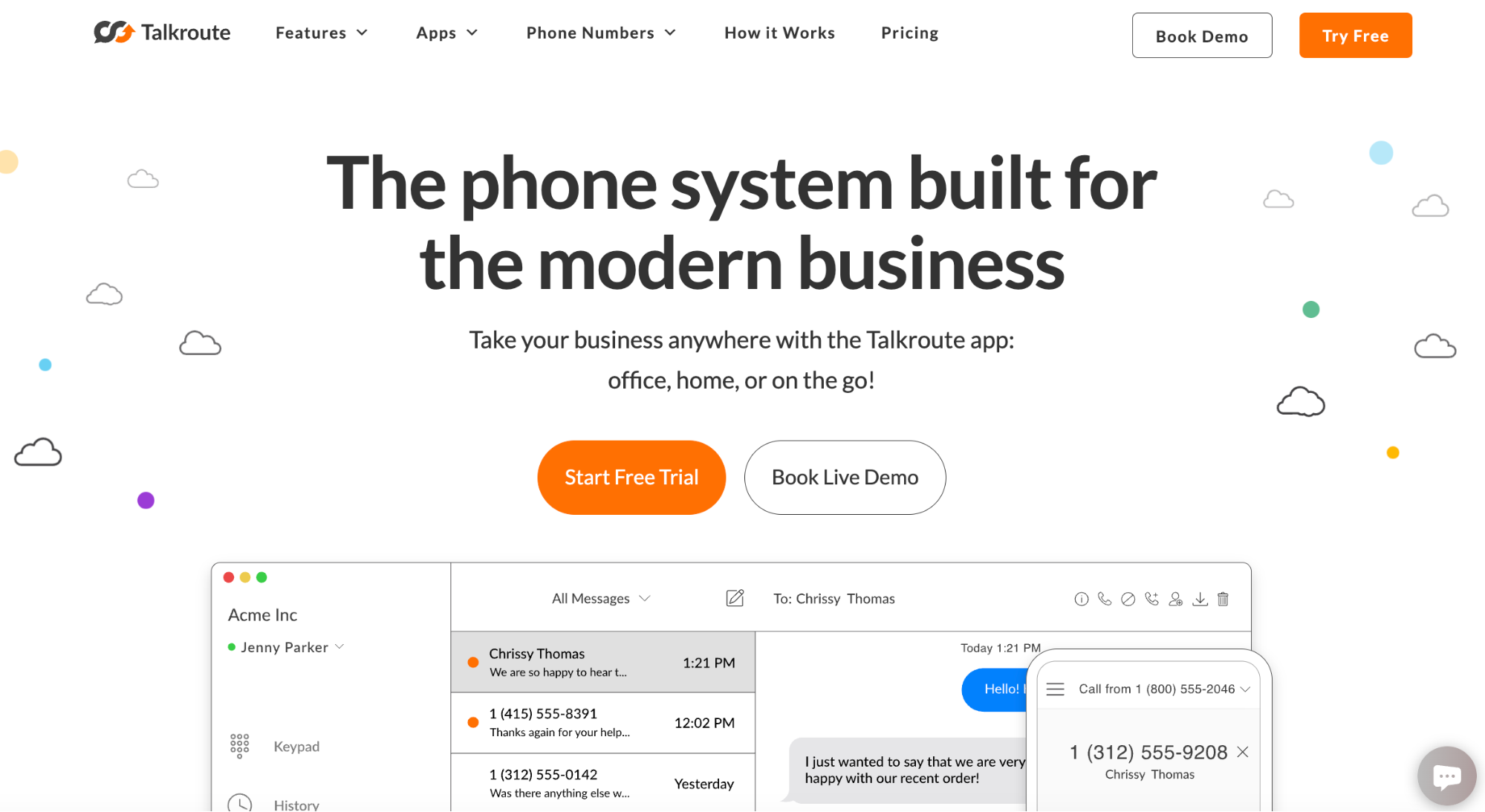
Handling business calls the right way keeps things running smoothly and customers happy.
Talkroute makes this easy by giving you the flexibility to take calls from anywhere while keeping your team connected.
It’s a complete call routing solution that helps you stay available, stay organized, and give every caller a smooth experience.
Route Calls to the Right Person, Every Time
Talkroute makes it easy to send incoming calls exactly where they should go. Whether it’s a sales rep, support agent, or manager, you can set clear rules for who gets which calls. No more guessing or bouncing between phones. You stay in control, and your callers get faster help.
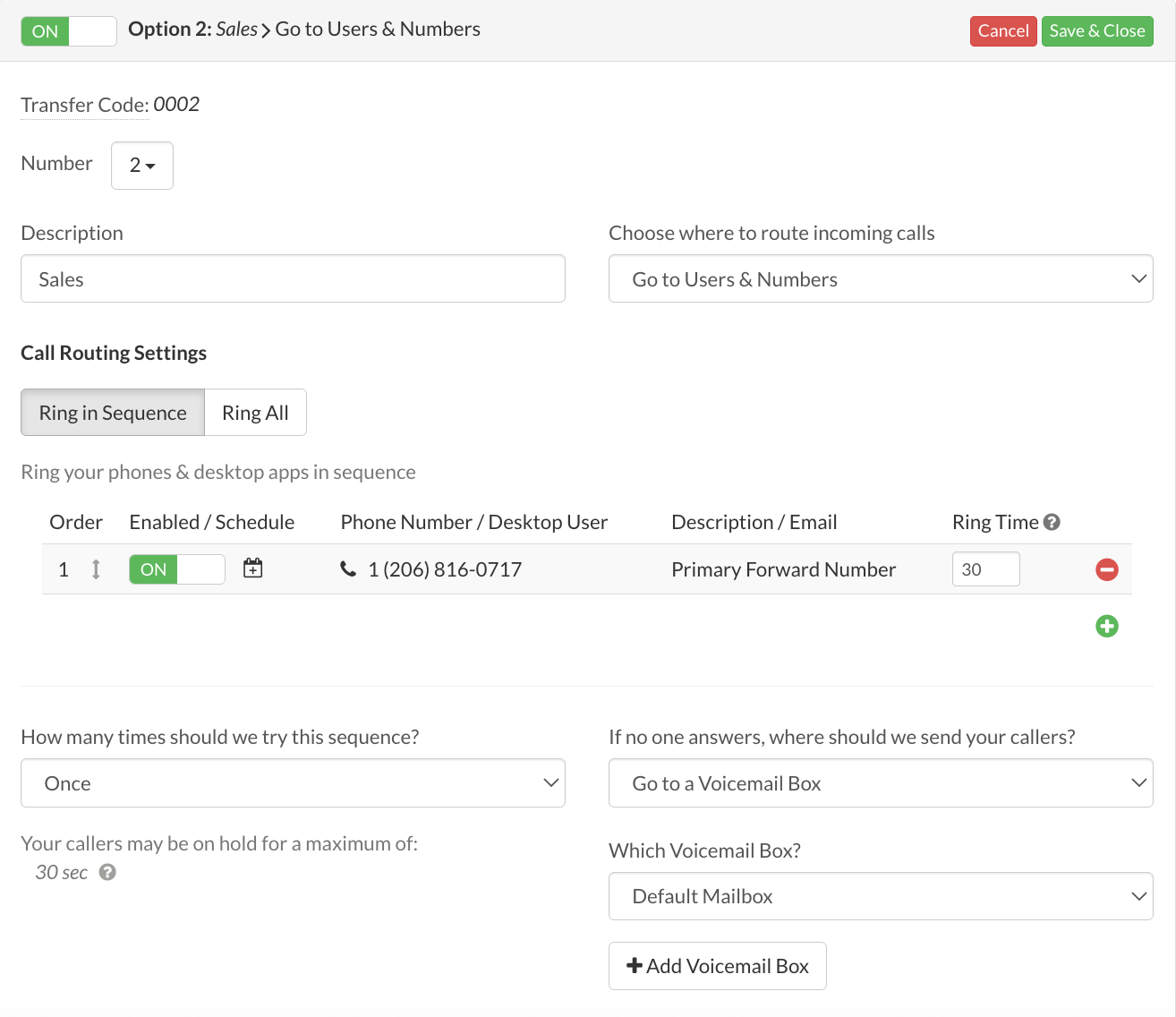
Create Custom Call Paths for Any Situation
You can build custom call flows for every phone number, extension, or menu option. Want to forward some calls to mobile phones and others to desktop users? Want calls to follow one path during business hours and another after-hours? You can do all of that with just a few clicks.
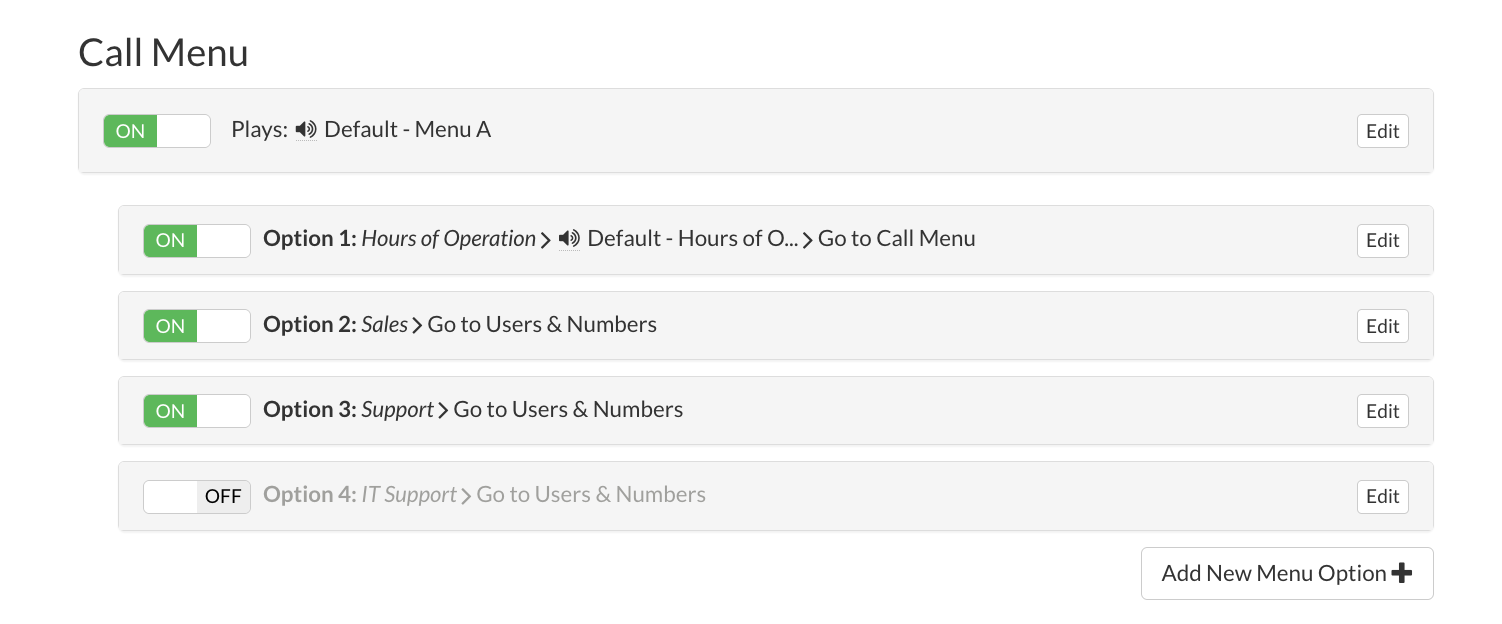
Ring Phones and Desktops the Way You Want
With Talkroute, you decide how calls ring. Set your system to ring all devices at the same time or in a specific order. You can even choose how long each device should ring and what happens if there’s no answer. Add hold music or a message while callers wait.
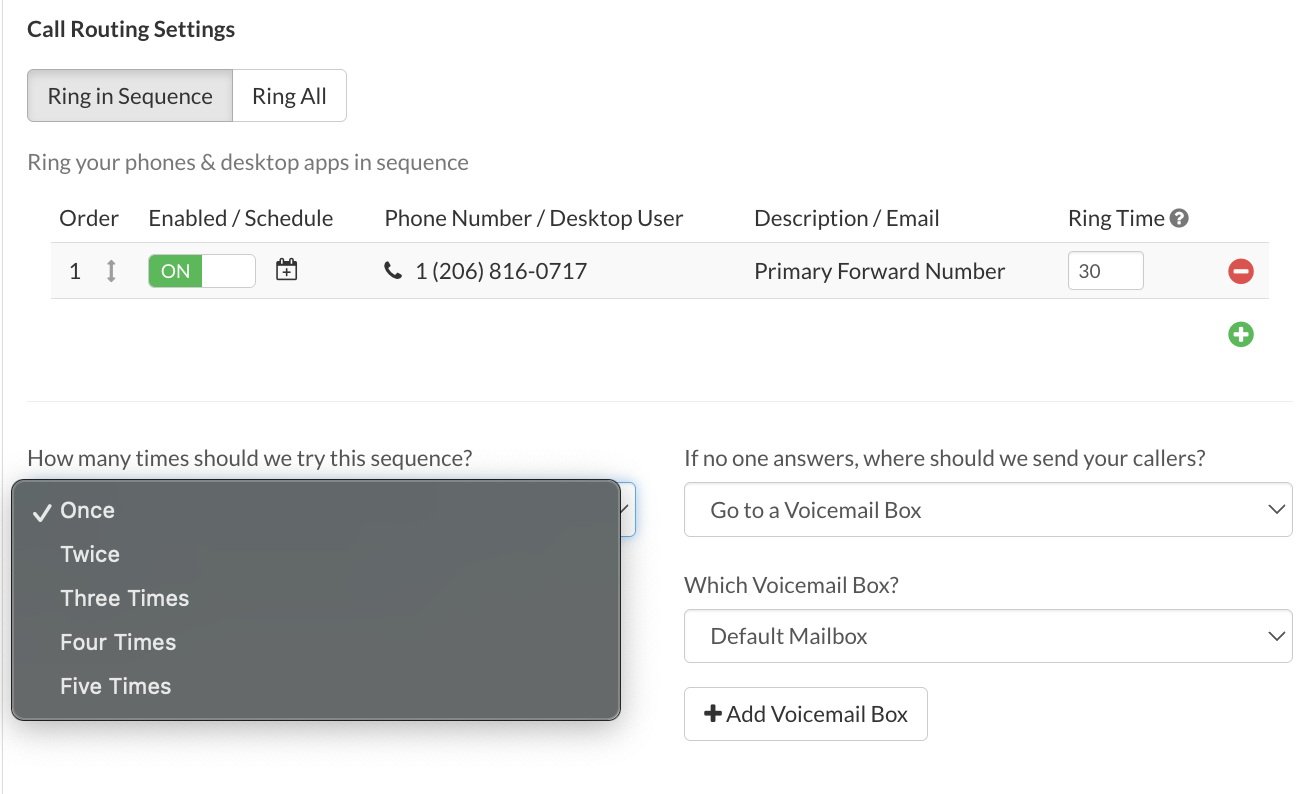
Choose When Your Phones Ring
You don’t have to answer calls all day. Use Talkroute’s scheduling tools to pick the days and times you want your phones to ring. After hours, calls can go to voicemail or be forwarded somewhere else. You set the schedule that works best for you and your team.
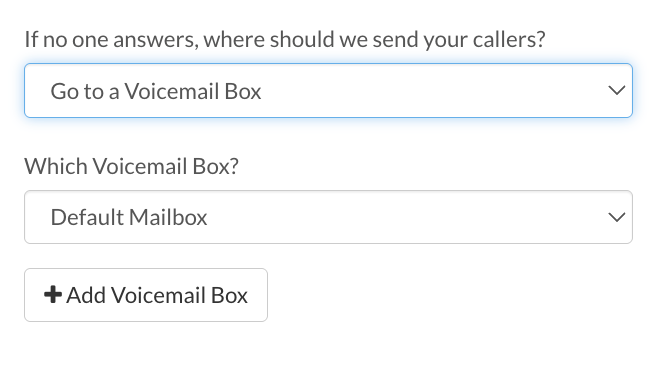
Add Menus That Guide Callers
Call menus help your callers reach the right place without speaking to a receptionist. Set up simple options like “Press 1 for sales” or “Press 2 for support.” You can also create submenus for more detailed choices or play recorded messages with info like your hours or location.
Use Extensions to Keep Things Organized
Assign single-digit or multi-digit extensions to each team member or department. Extensions help organize your phone system and make it easier for callers to connect with the right person. You can even send calls straight to voicemail if needed.
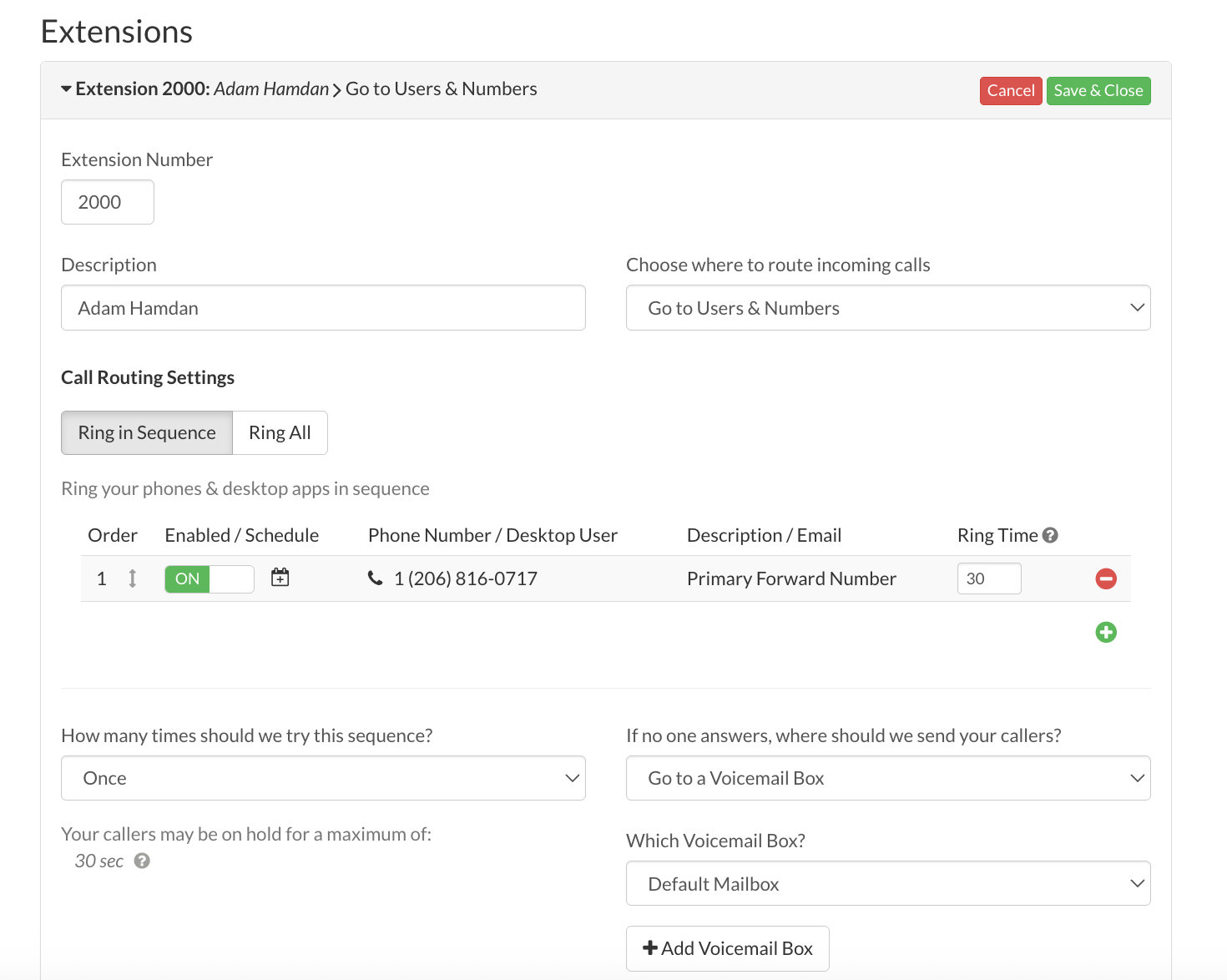
Send Calls Anywhere, Anytime
Whether your team works in the office or remotely, Talkroute lets you forward calls to any phone or desktop app. It works with mobile phones, landlines, and computers. Your team can take calls from anywhere with an internet connection.
More than 100,000 businesses trust Talkroute to keep them connected. Ready to join them?
Start your free trial today, or book a live demo!
FAQs About Phone Call Routing Software
What is call routing software?
Call routing software helps businesses send incoming calls to the right person or team. It follows rules that decide where the call goes based on things like the time of day, who is available, or the caller’s needs.
An effective call routing service can automatically distribute incoming calls, reduce missed calls, and help improve customer satisfaction. Companies use this type of routing software in their phone system, contact center, or call center to handle phone calls more easily and improve call efficiency.
How to route phone calls?
To route phone calls, you need a call routing setup that connects with your business phone number or phone system. You create routing rules to decide how calls should move. For example, customer calls during business hours can go to your sales team, while after-hours calls go to voicemail.
How much does call routing cost?
The cost of call routing software depends on the features and provider. Basic routing software might start around $15 per user per month. If you need advanced tools like call recording, call monitoring, automatic call distribution, and call reporting, the price can go up to $50 or more per user per month.
Large businesses with high call volumes and complex routing needs may pay more for tools that evaluate agent performance and support call center agents more effectively.
What is the difference between call routing and IVR?
Call routing is the process of directing inbound calls to the appropriate team member or agent. It is used to improve call handling and make sure the caller reaches the right person. Interactive voice response, or IVR, is a voice menu that lets callers choose where they want to go.
For example, a caller might press 1 for sales or 2 for support. IVR helps collect information, then the call routing system uses that information to automatically route calls to the most suitable agent. So, IVR is one part of a full business call routing system.

Stephanie
Stephanie is the Marketing Director at Talkroute and has been featured in Forbes, Inc, and Entrepreneur as a leading authority on business and telecommunications.
Stephanie is also the chief editor and contributing author for the Talkroute blog helping more than 200k entrepreneurs to start, run, and grow their businesses.




